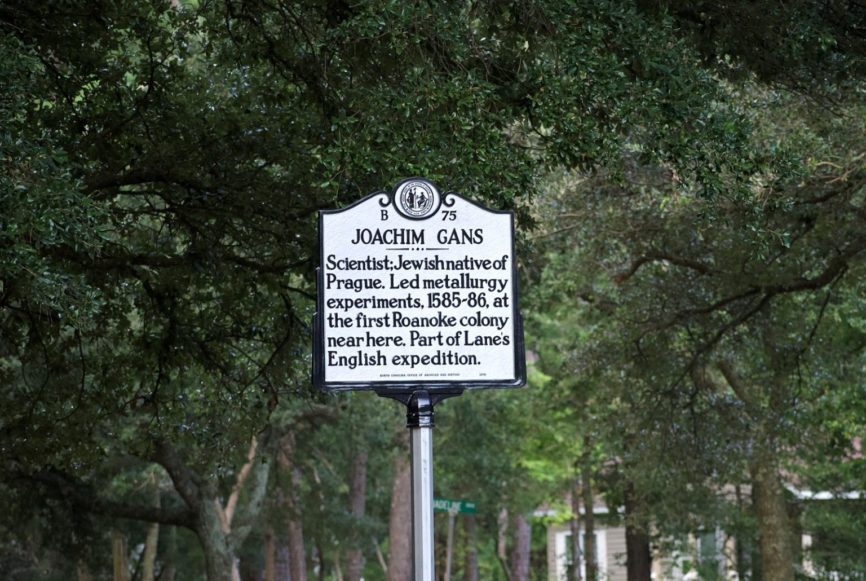Joachim Gans is not a well-known name. Maybe that will change because a highway marker was just dedicated to him at For Raleigh on the north end of Roanoke Island. The marker, though, is just a brief encapsulation of why Gans was significant, and it does not come even close to telling the full tale.
Before the 107 settlers of the Lost Colony of Roanoke disappeared in 1587 or 1588, Sir Walter Raleigh sent the first expedition to prepare the way for the women and children who would follow.
The purpose of that first expedition was diplomatic, military and scientific.
Under the leadership of Ralph Lane, the diplomatic and military initiatives were abysmal failures, leading directly to the open hostility of the local tribal nations to the English presence on Roanoke Island.
In the realm of science, though, that first expedition produced a remarkable body of work, and Joachim Gans was an integral part of it.

Gans, Jewish and born in Prague, was one of the most respected metallurgists of his day. Invited to England to look at their copper smelting practices he developed improved processes that removed the impurities from copper, reducing the time from raw ore to finished copper from sixteen days to four days.
Raleigh was aware of the work he was doing and asked him to join the 1584 expedition as the metallurgist.
When Joachim Gans set foot in the New World he was the first Jew and the rest Czech to do so.
That alone would make him significant in the history of the Americas, but there is more to his story.
When the Tiger, the ship carrying Gans and his equipment, ran aground off Cape Hatteras, the crew jettisoned his smelting oven to reduce the ship’s weight and refloat it. That didn’t seem to slow Gans down one bit. We know this because the only artifacts we have of that first expedition are the bricks he fashioned to create his assay oven and two copper nuggets he smelted.
As the metallurgist for the expedition, the hope was that he would find precious metals—gold and silver—in ready supply. He found neither. He did, however, identify copper and iron in workable quantities.
The evidence of Gans’ genius goes beyond the bricks he fashioned or the copper nuggets.
A 1990 archeological excavation at Fort Raleigh found clear evidence of a metallurgy lab with shards of glass with chemical residue dating from the 16th century. That is another first for Gans—the first scientific lab in the Americas.
Under the leadership of Ralph Lane, the 1585 expedition was probably doomed from the outset. Lane’s prior military experience was notable for its brutality in suppressing the Irish and the evidence suggests strongly that he attempted the same strategy with the native tribes.
When Sir Francis Drake appeared at Roanoke Island in June of 1586, he agreed to evacuate the colony, probably saving everyone’s life.
Gans returned to an England, virulent in its anti-Semitism. In 1589, asked in Hebrew by the Bishop of Chichester Richard Curteys if Jesus was the son of God, he supposedly answered, “What needeth the almighty God to have a son? Is he not almighty?”
Arrested and imprisoned for blasphemy, he was freed by a bevy of high-ranking British government officials, many of whom had benefitted financially from Gans innovations.
He seems to have disappeared after being freed. Most historians believe he returned to his native Prague.
